This article contains affiliate links. Learn more in our affiliate disclosure.
Traveling from Rome to Venice is one of the classic routes in Italy, and after doing this trip ourselves, we can honestly say it’s much simpler than it looks at first.
Venice feels like a completely different world compared to Rome. Arriving at Santa Lucia and stepping straight onto the canals is one of those scenes that never gets old, no matter how many times you visit.
A lot of travellers aren’t sure which route is best — train, flight, car, or even a budget bus. We’ve tried a few options and learned what actually works in real life, especially if you want to maximise your time in Venice rather than spending half the day in transit. This guide walks you through everything clearly, based on what we’d choose again.
And once you’re there, Venice is surprisingly easy to explore. If you’re still planning your itinerary, our best things to do in Venice guide will help you map out the highlights, while our where to stay in Venice breakdown makes it much easier to choose the right neighbourhood without overthinking it.
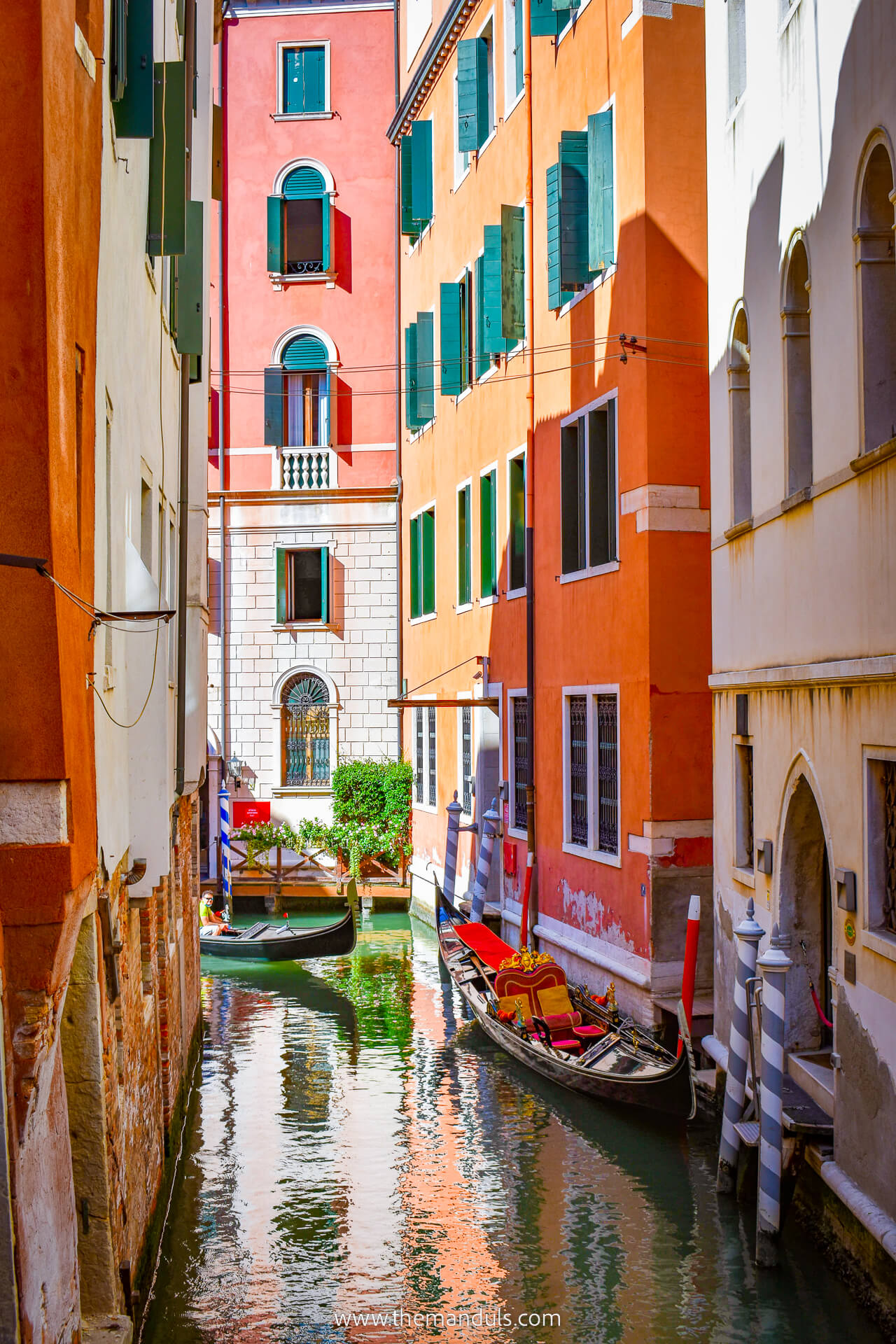
Quick Overview
⭐️ Fastest: Train (3h45–4h direct to Santa Lucia)
⭐️ Cheapest: Bus from 11€ (but arrives in Mestre, not Venice centre)
⭐️Best for visiting multiple destinations: car rental
⭐️Best platform for booking tickets: Omio
Best Way to Get From Rome to Venice (Our Recommendation)
The fastest and easiest way to get from Rome to Venice is the high-speed train. It takes around 4 hours, runs frequently from Roma Termini, and arrives directly at Venezia Santa Lucia on the Grand Canal. Prices are between 30€ and 90€
Buses are the cheapest option, but also the longest, with a travel time of 7 hours. The ticket price starts at 11€.
Flights only make sense if you’re already at the airport, and driving is great for road-trippers but slower door-to-door.
TIP: Whether you choose to take a train or bus for this route, compare the best deals on Omio.
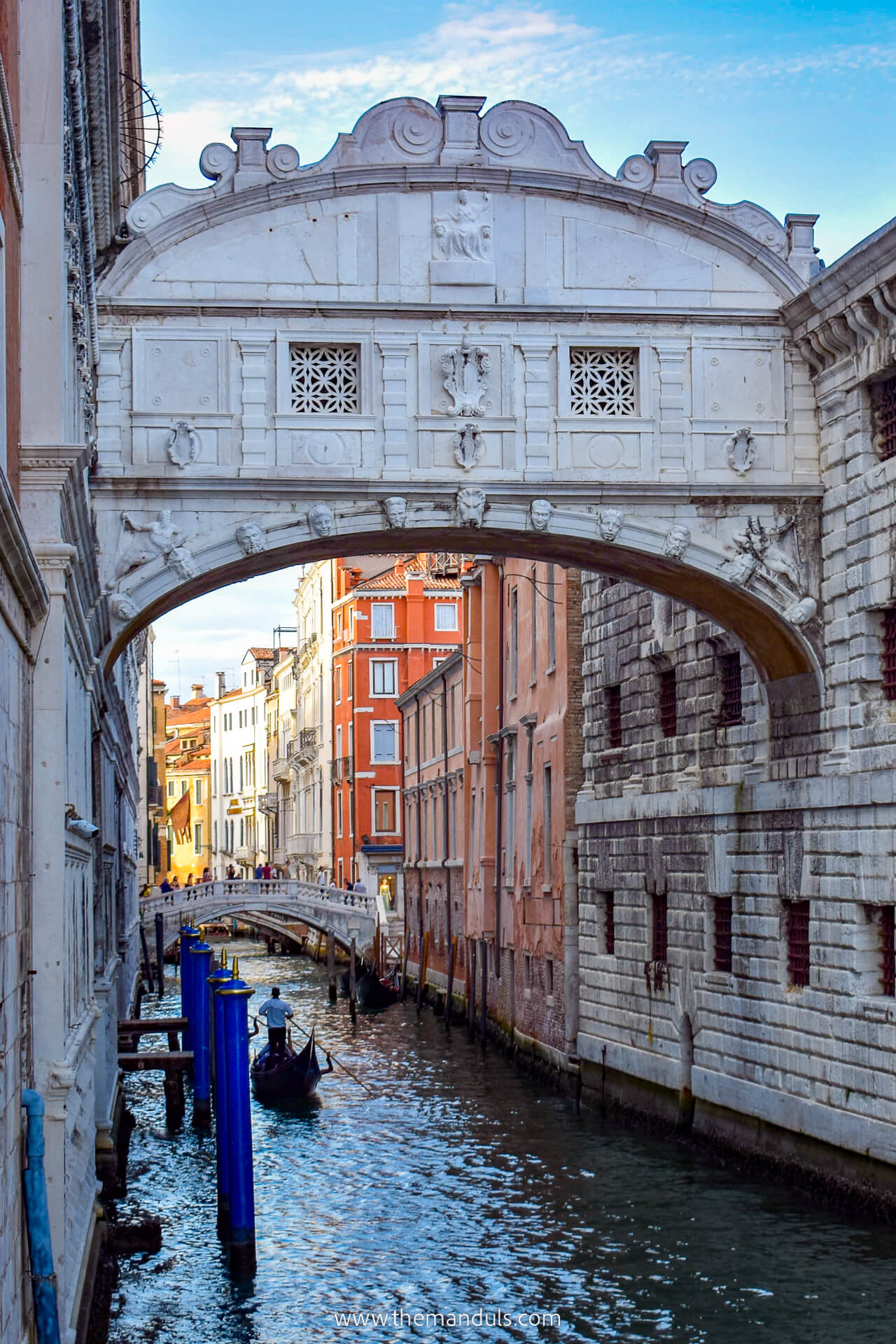
In a hurry?
These are our top hotels in Venice we’d book again
⭐️⭐️⭐️ Palazzo Keller (our top pick) – Elegant rooms, a central San Marco location, and a lovely courtyard breakfast setup make this one feel comfortable.
👉 See prices and availability →
⭐️⭐️ Palazzo Veneziano – Venice Collection – Modern, spacious, and perfectly placed in Dorsoduro with great transport links and a breakfast worth waking up for.
👉 See prices and availability →
⭐️ iH Hotels Venezia Salute Palace – A comfortable, great-value stay with traditional décor and a calm atmosphere close to the Guggenheim area.
👉 See prices and availability →
By Train (Fastest & Easiest Option)
Traveling from Rome to Venice by train is by far the smoothest option — it’s fast, comfortable, and takes you directly into the heart of Venice without any extra transfers.
We’ve done this route ourselves, and it’s the kind of journey where you simply get on, relax, and step off right beside the canals.
Travel Time, Price & How It Works
Ticket Price: 30 – 90€
High-speed trains cover the Rome to Venice route in 3 hours 45 minutes to 4 hours, depending on the service. Prices vary based on demand and how early you book, but you can usually expect anything from 30–90€ for standard seats.
We took the train from Roma Termini, but some connections also depart from Roma Tiburtina. Our favorite part was that all high-speed services arrive at Venezia Santa Lucia, the station right in Venice’s historic centre. No extra bridges, ferries, or buses needed — you step outside and you’re already on the Grand Canal.
Tickets are digital (QR code), luggage doesn’t require check-in, and you can arrive just a few minutes before departure if you’re already inside the station.

Which Train to Choose (Frecciarossa vs Italo)
You’ll see two main operators:
- Frecciarossa (Trenitalia) — slightly more traditional layout, reliable, lots of daily departures, and different comfort levels like Premium, Business, and Executive.
- Italo — modern design, a bit sleeker, often cheaper when booked early, and great if you like quieter spaces (their “Club Executive” is very comfortable).
We tried both companies on multiple routes and gotta say that both are fast and comfortable, so you honestly can’t go wrong. We usually choose whichever has the better schedule and price — service quality is almost identical.
Where the Trains Depart and Arrive
Rome Departure:
Most trains from Rome to Venice leave from Roma Termini, the main station. It’s well signed, easy to navigate, and connected to both metro lines. A smaller number depart from Roma Tiburtina, which is equally simple to reach.
Venice Arrival:
You’ll arrive at Venezia Santa Lucia, right on the water. From here, you can walk to many neighbourhoods or hop on a vaporetto (water bus) for further connections. See our How to get around Venice guide for more details.
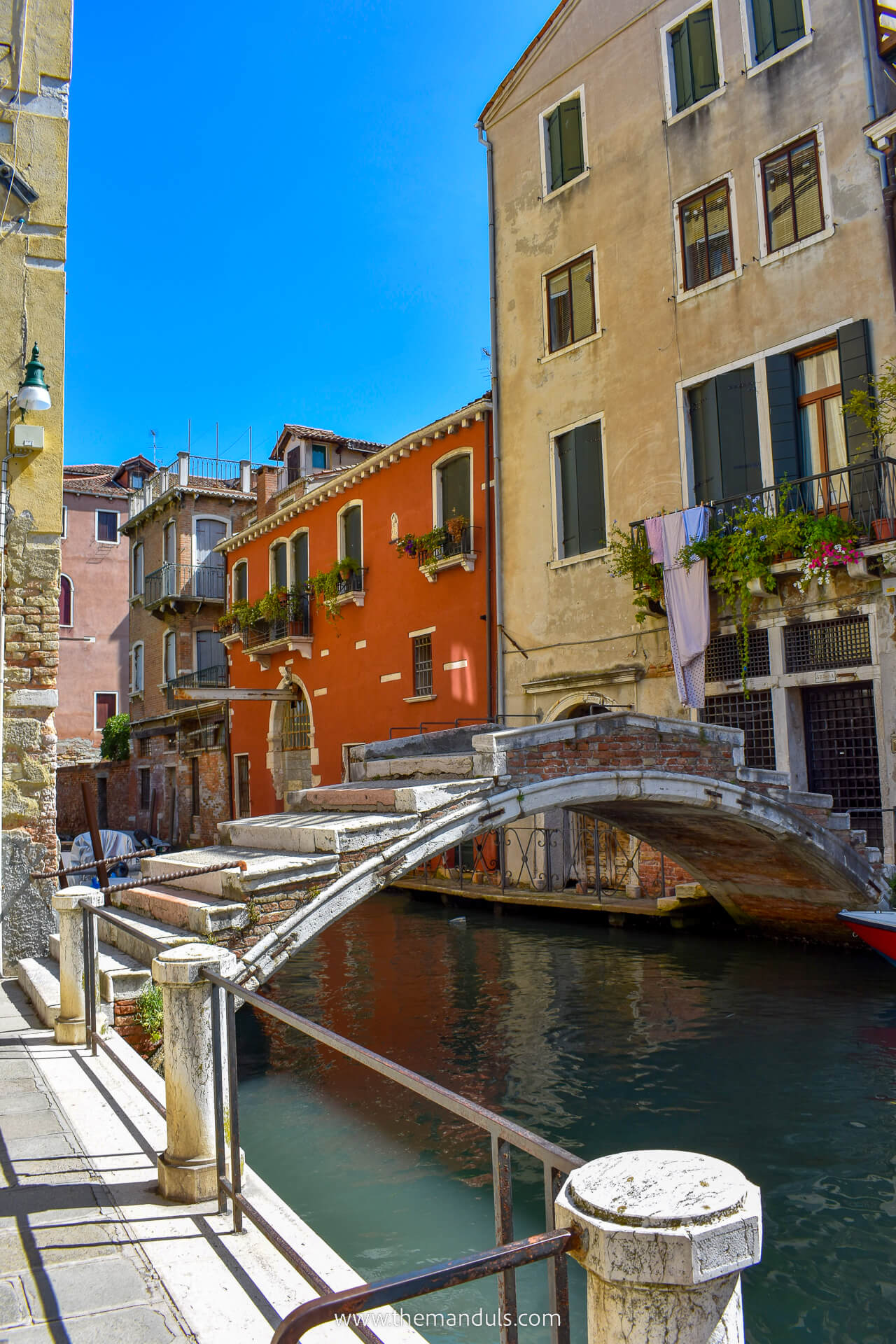
How to Book Tickets (and When Prices Are Lowest)
You can book through:
- Trenitalia (Frecciarossa)
- Italo
- Omio (compares both instantly)
Prices on Omio are usually the same or very close to the official websites, and we’ve used it a lot when planning Italy routes because it keeps all tickets in one place and sends instant mobile confirmations. We also like that it shows both companies side-by-side, which makes choosing the best time and price much quicker.
Tickets from Rome to Venice usually open 4–6 months ahead, and booking early gives you the lowest fares — they increase as the date gets closer.
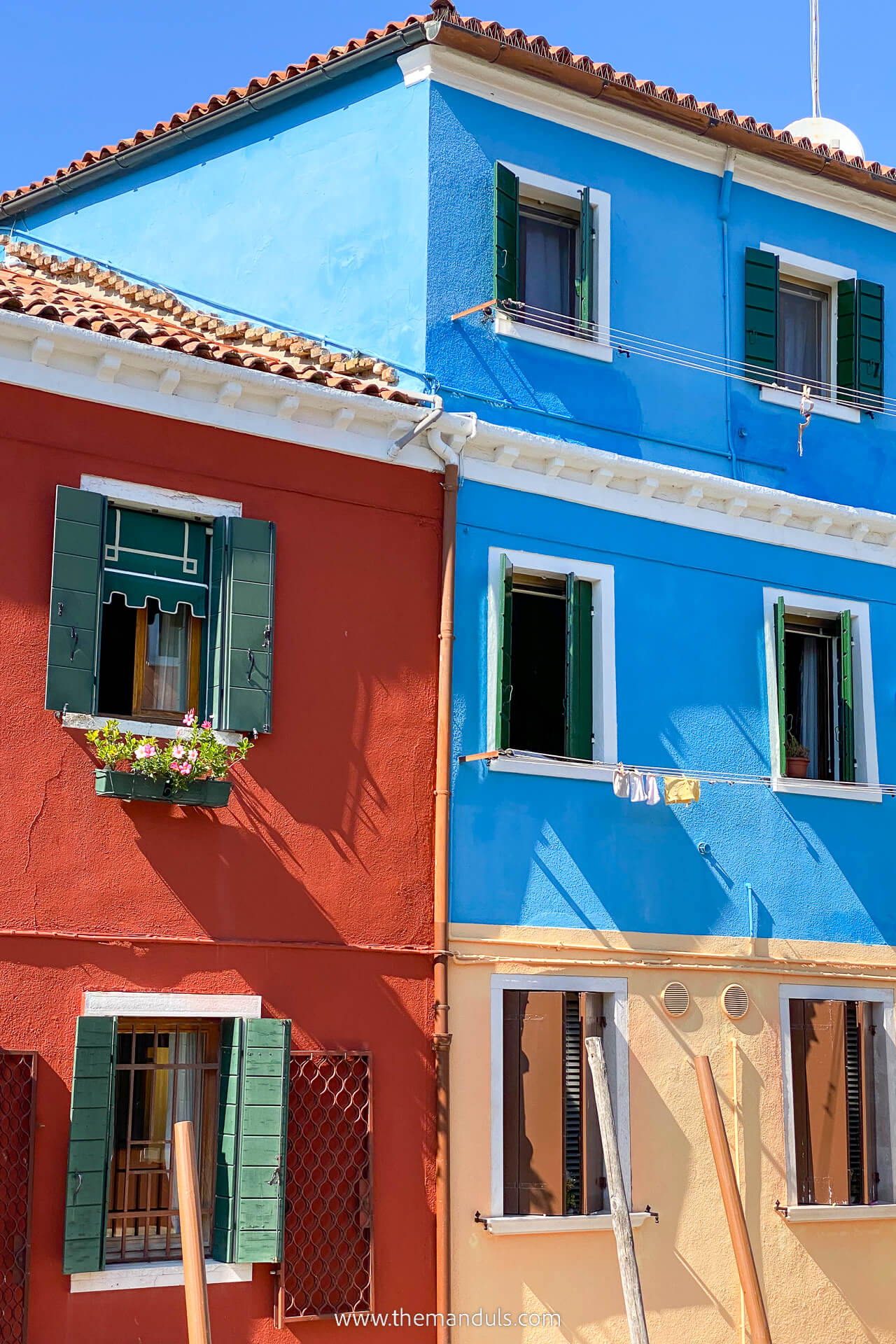
By Plane (Not Usually Recommended)
Flying from Rome to Venice looks fast on paper, but once you add airport transfers, security, and waiting times, it rarely saves time. We’ve compared both options several times, and the train almost always ends up quicker door-to-door.
Travel Time
The flight itself is only 1 hour, but the full journey usually takes 3.5–5 hours when you include getting to Fiumicino or Ciampino, security and boarding time, landing at Venice Marco Polo (VCE), and getting from the airport to Venice.
In most cases, this ends up being the same or even longer than taking the high-speed train.
When a Flight Might Make Sense
A plane becomes practical if you’re already at Fiumicino after an international arrival.
You can sometimes also find a very cheap last-minute fare, so it might be worth it if you’re tight on budget. But again, also consider that you’ll have to pay for airport transfers.

How to Get From Venice Airport to the City
Venice Marco Polo sits on the mainland, so you’ll need one extra step to reach the canals.
The easiest way is the airport bus to Piazzale Roma, which takes around 20–25 minutes and drops you at the edge of the historic centre, where you can switch to a vaporetto. The cheapest ticket costs 10€ one way. There’s more information on the airport website.
But again, you can quickly see all the schedules and prices on Omio — it costs exactly the same and it’s much easier to use, especially when you want to check which companies are available, where the bus arrives, and at what time.
If you’d rather arrive directly by water, the Alilaguna boats are a good option. They take around 50–70 minutes, depending on the line, and cost roughly €15 one way (plus a small fee if you have luggage).
Boats run frequently throughout the day and stop at major areas like San Marco, Rialto, Fondamente Nove, and Zattere, so it’s worth checking which of the three lines is closest to your hotel. The ride can feel a bit long, but it’s scenic and a nice way to start your time in Venice — especially if you’re staying near one of the stops.

By Car (Scenic but Slow)
Driving from Rome to Venice can be a beautiful trip, but it’s not the most efficient. The route takes 5–6 hours without stops, and most of the drive follows the A1 and A13 — smooth highways, easy navigation, and plenty of places to pull over for coffee or lunch.
It’s a nice option if you’re planning to explore Tuscany, Bologna, or smaller towns along the way, but if your goal is simply to get from one city to the other, the train is quicker and less stressful.
Time, Route & Road Conditions
The most direct route from Rome to Venice runs via A1 and A13, and it’s straightforward the entire way. Road quality is good, tolls are common, and traffic can build up near Florence and Bologna at peak times. If you enjoy road trips, this is a comfortable drive.
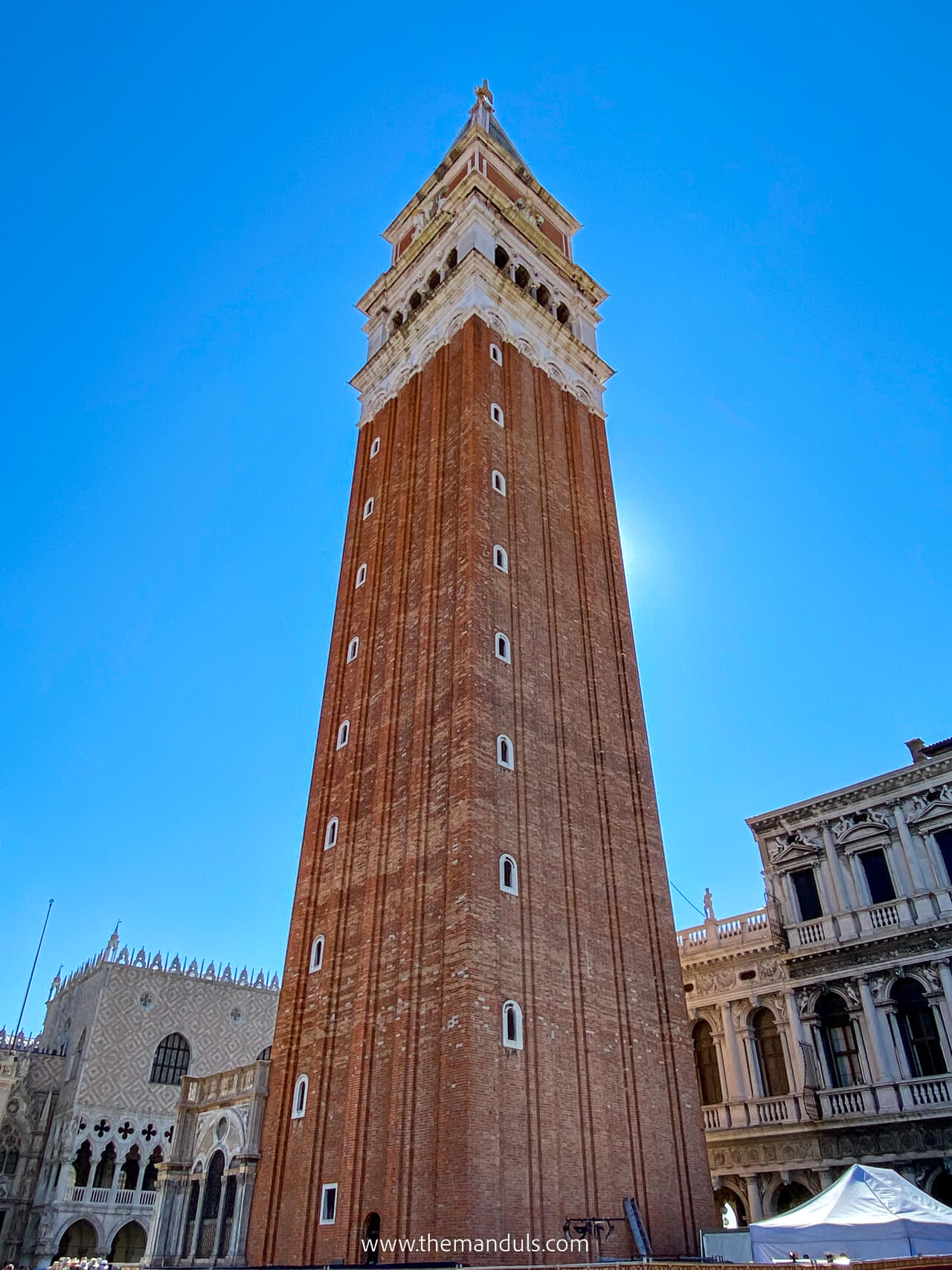
Car Rental Tips
If you’re renting a car to get from Rome to Venice, we always book through Discover Cars because it compares all major companies in one place and makes it easy to see deposits, fuel policies, and one-way fees without clicking through multiple sites. We’ve used it for all of our European trips, and it’s been the most reliable option so far.
We also always add full-coverage insurance, and we genuinely recommend it — small scratches, parking dents, or stone chips happen more often than you’d expect in Italian cities, and having full coverage just removes the stress completely.
If you’re picking up the car in Rome, Termini, Tiburtina, or Fiumicino are the simplest rental locations, and returning it in Venice is straightforward as long as you remember that cars stop at Piazzale Roma or Tronchetto.
Rent a car via DiscoverCars with free cancellation up to 24 hours in advance.
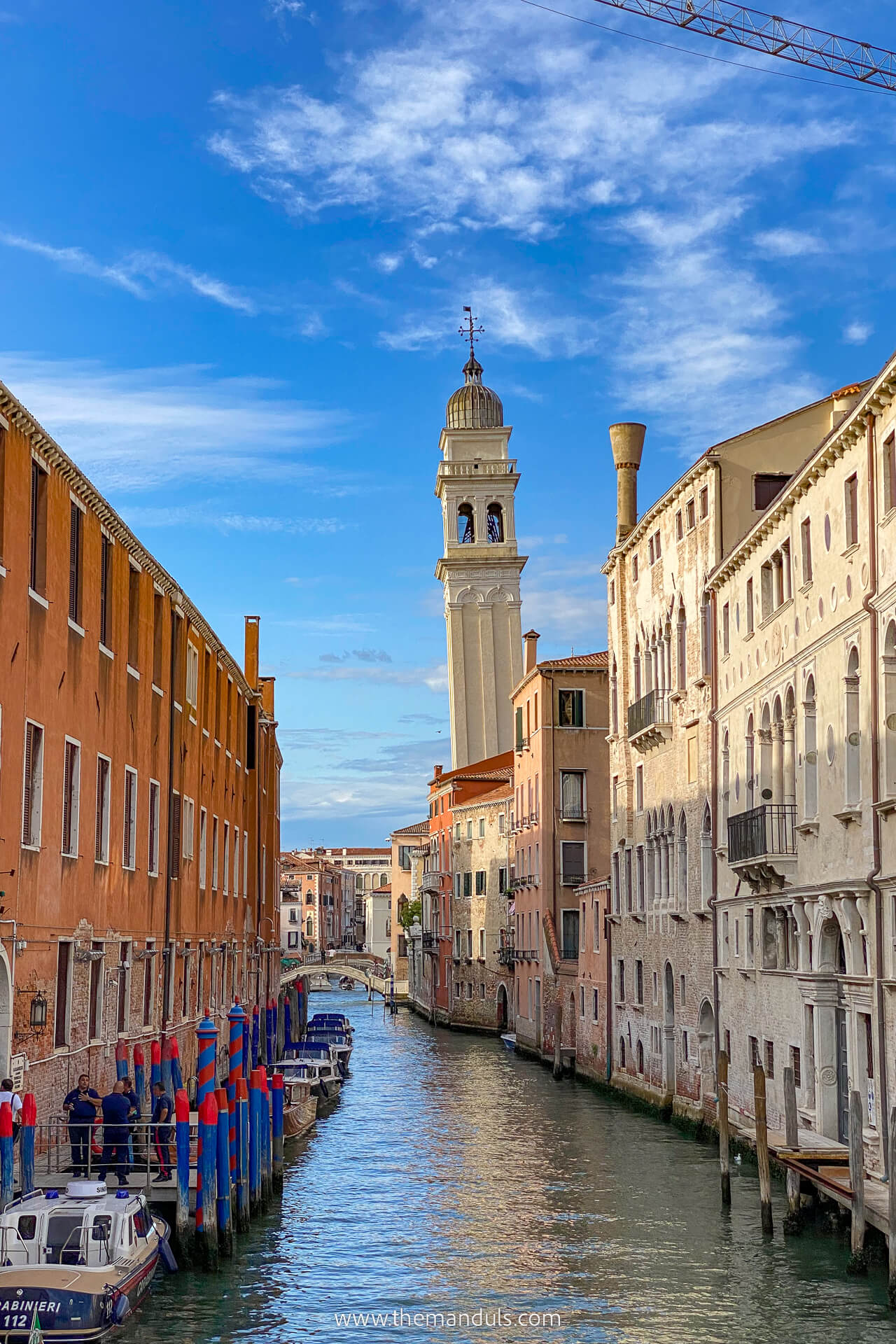
Where to Park in Venice (Important!)
Cars can only go as far as Piazzale Roma or Tronchetto, but there are also good options on the mainland if you want to save money.
On one of our visits, we parked at Venice City Park for 6.5€ per day. Sitting right at the edge of the mainland, it turned out to be a great choice — prices were much lower, and there’s a bus stop right outside that takes you straight to Piazzale Roma in just a few minutes for 1.5€ (or it’s included in a Vaporetto day ticket).
If you prefer parking inside Venice itself, Garage San Marco and Autorimessa Comunale at Piazzale Roma are the most central (and the most expensive), usually around €25–€35 per day.
Spaces book up fast, so it’s worth reserving in advance. Tronchetto has more availability and is slightly cheaper, but you’ll need a vaporetto or a longer walk to reach most areas.

Bus Option (Cheapest, Longest)
Traveling from Rome to Venice by bus is the most budget-friendly choice, but also the slowest. The journey usually takes 7–8 hours, depending on traffic and the number of stops. It’s a good option if you’re trying to keep costs low, but it doesn’t come close to the comfort or speed of the train.
Price & Schedule Overview
Buses tend to run throughout the day and into the night, with fares starting from €11–€50 when booked early. The most popular companies are Flixbus and Itabus, both departing from Rome Tiburtina and arriving at Venice Mestre, Tronchetto, or airport.
If your bus stops in Mestre, you’ll need a quick train or tram ride to reach the historic centre.
To see the schedules and prices, we recommend Omio, an excellent option to compare multiple deals in one place. Their prices are usually the same as those on the official website.
When the Bus Is Actually Worth Considering
We’d only choose the bus from Rome to Venice if the train prices are unusually high or if you’re travelling overnight and want to save a night’s accommodation.

FAQ
A little — you’ll pass rolling hills and small towns, but it’s not a “wow” route. The real highlight is arriving right beside the Grand Canal at Santa Lucia.
As early as you can. Prices rise closer to the date, and morning trains sell out fastest. We usually book 3–6 weeks ahead.
You technically can, but it’s a very long day. You’d get a quick taste of Venice, but it’s not ideal. Staying at least one night is much better.
We usually pick a window seat in Standard or Premium. There isn’t a “best side” for views — the scenery is similar on both.
Final Thoughts
Getting from Rome to Venice is easier than most people expect, and after trying different routes ourselves, the high-speed train is the one we always come back to. It’s quick, comfortable, and drops you right beside the canals without any extra hassle.
Flying or driving only makes sense if you’re already heading that way for other parts of your trip.
No matter which option you choose, the journey itself is straightforward — and once you step out at Santa Lucia and see the water for the first time, it’s worth every minute.

